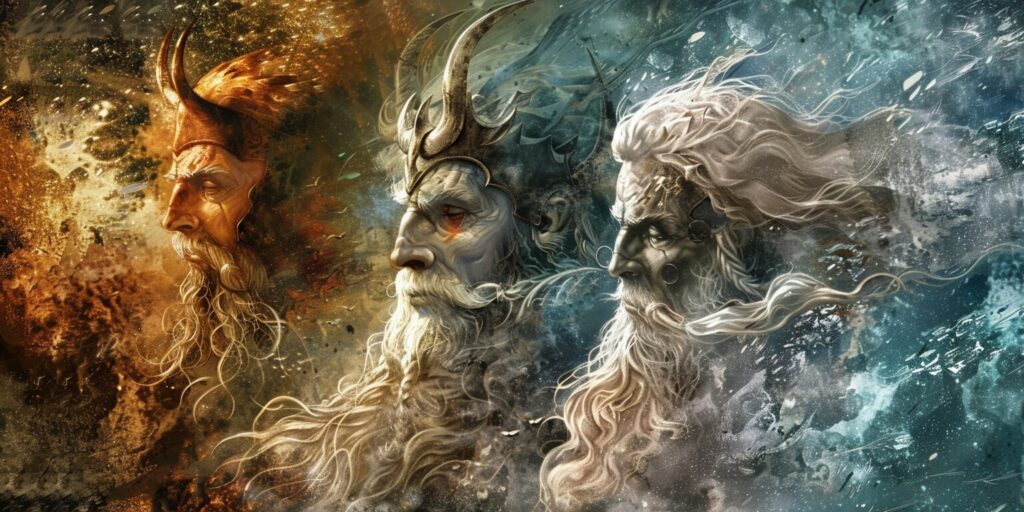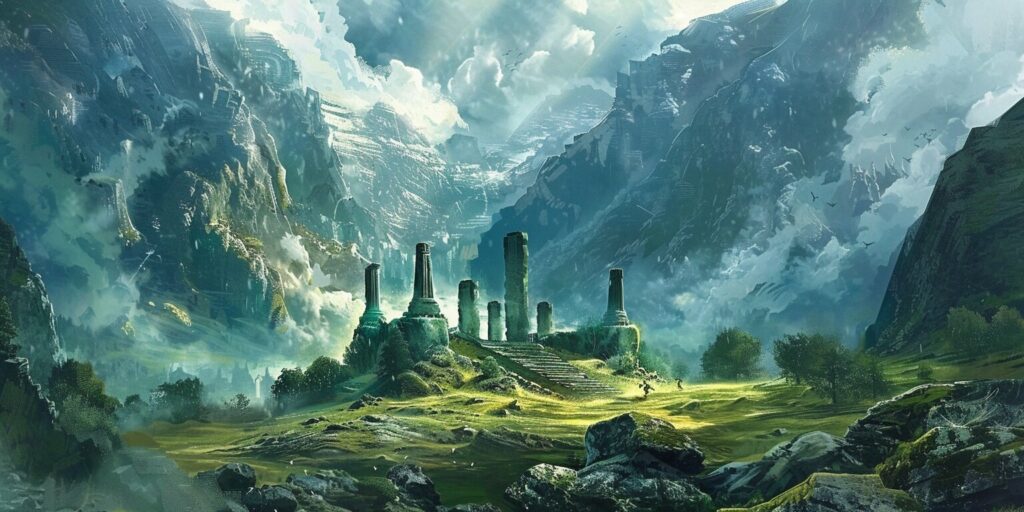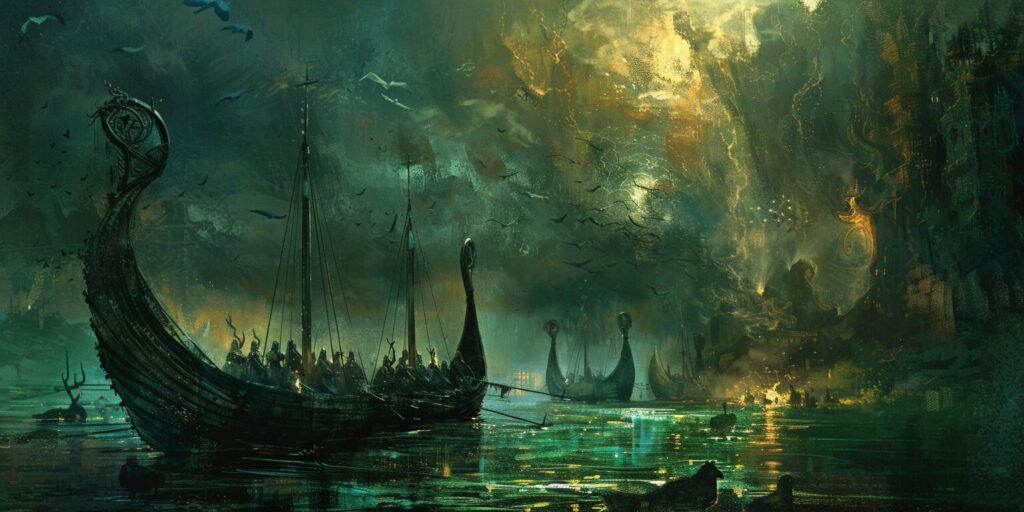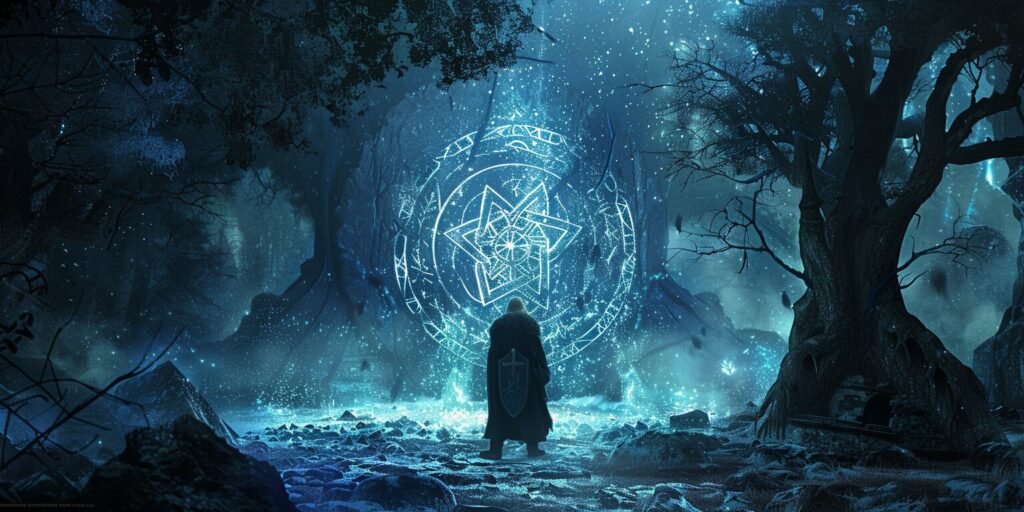Aesir Gods, Baldur, Freya, Norse Ancestry, Norse Goddesses, Norse Gods, Norse Mythology, Odin, Tales of the Gods, Thor, Vanir Goddesses, Viking Heritage, Vikings
The Decline of Norse Beliefs: Tracing the Fall of Viking Religion
The rich and captivating world of Norse mythology once dominated the religious landscape of Scandinavia and other parts of Northern Europe during the Viking Age, from around 793 to 1066 AD, embodying the core of Old Nordic religion. This ancient belief system, also known as Norse paganism or Old Norse religion, centered around the worship of a pantheon of gods and goddesses, including the powerful Odin, the mighty Thor, the enchanting Freya, and the enigmatic Baldr, who were believed to reside in the mythical realm of Asgard.
The Norse pantheon, vividly depicted in the Poetic Edda and Prose Edda, formed the foundation of Viking culture and mythology, shaping their worldview, rituals, and way of life. Thor and Odin play central roles in Norse myth. However, the gradual decline and eventual disappearance of this vibrant pagan faith was a complex and multifaceted process closely intertwined with the arrival and spread of Christianity throughout Scandinavia. So, how did Norse religion end? Let`s find out in the article.
Exploring Norse Religion
The Norse religion, also known as Norse paganism or Old Norse religion, was the dominant belief system in Scandinavia and other parts of Northern Europe during the Viking Age, shaping the essence of Norse culture. This ancient faith had its roots in the pre-Christian religious traditions of the Germanic peoples, who inhabited the region for centuries, including areas now known as Iceland, Sweden, and Denmark.
The Origins of Norse Beliefs
The old Norse religion evolved from the pre-Christian religious practices and beliefs of the Germanic tribes that inhabited Scandinavia and parts of modern-day Germany, the Netherlands, and other regions. These beliefs were closely tied to the natural world, with deities and spirits associated with various aspects of the environment, such as the sun, the moon, the wind, and the sea, embodying the essence of the Norse belief system.
Key Figures in Norse Mythology
The Norse pantheon, as depicted in the Poetic Edda and Prose Edda, included a diverse array of gods and goddesses, such as Thor and Odin, each with their own unique powers and domains. Among the most prominent figures were Odin, the allfather and god of wisdom, war, and death; Thor, the god of thunder and protector of humanity; Freyja, the goddess of love, fertility, and war; and Baldr, the god of light and purity.

Influence of Norse Religion on Viking Culture
The old Norse religion was deeply woven into the fabric of Viking culture, shaping their worldview, customs, and way of life, with rituals often centered around places like the temple at Uppsala. The belief in the afterlife, where warriors who died honorably in battle would be welcomed into Valhalla, the hall of the slain, was a central tenet of the Norse faith and influenced the Viking’s fearless approach to combat. Additionally, the Norse cosmology, which envisioned the world as a series of interconnected realms, informed their understanding of the universe and their place within it, reflecting the depth of the Norse myth.
The Spread of Christianity
The gradual decline of the Norse religion was closely tied to the arrival and spread of Christianity throughout Scandinavia, marking a significant shift in the region’s religious landscape during the 11th century.
The process of Christianization began in the early medieval period, as Christian missionaries and merchants from continental Europe began to establish a presence in the region, significantly impacting Norse culture. This influx of Christian influence gradually eroded the dominance of the old Norse gods and customs, paving the way for the eventual conversion of Viking societies to the Christian faith.
Arrival of Christianity in Scandinavia
The arrival of Christianity in Scandinavia can be traced back to the 8th century, when the first Christian missionaries, such as Ansgar, arrived in the region to spread the new religion. Over the following centuries, the Christian faith gradually gained a foothold, with Norwegian and Danish kings eventually embracing it and encouraging the conversion of their subjects.
Impact of Christianization on Norse Worship
The spread of Christianity profoundly impacted traditional Norse worship and beliefs. As the new religion gained prominence, the old pagan temples and shrines were often demolished or converted into Christian churches. The worship of the Norse gods, such as Odin, Thor, and Freyja, was increasingly suppressed as the Christian authorities sought to eradicate the old pagan practices.
Conversion of Viking Societies to Christianity
The process of converting Viking societies to Christianity was a gradual and complex one, often involving a combination of political, economic, and social factors that influenced the broader landscape of Norse culture. In some cases, the conversion was facilitated by the ruling elite, who recognized the potential benefits of aligning with the growing Christian power, a strategic shift seen across Iceland, Sweden, and Denmark. In other instances, the transition was marked by conflicts and resistance from the adherents of the old Norse faith, echoing the resilience of the Norse belief system against the spread of Christianity.
What Happened to Norse Religion: Decline of Norse Paganism
The decline of Norse paganism, also known as Old Norse religion, was a gradual and complex process that unfolded over several centuries, intertwined with the religious and cultural shifts of the Iron Age and early Medieval period. This ancient belief system, rooted in the pre-Christian religious traditions of the Germanic peoples, faced a steady erosion as Christianity gained a foothold and ultimately became the dominant faith in Scandinavia.
The Decline of Old Norse Pantheon
The old Norse gods, such as Odin, Thor, Freya, and Baldr, who were once the centerpieces of the pagan pantheon, gradually lost their influence and reverence within Norse communities. The arrival of Christian missionaries and the subsequent conversion of Viking societies to the new religion led to the gradual abandonment of the worship of the old Norse deities.
Factors Contributing to the Fall of Norse Religion
The decline of Norse paganism can be attributed to a combination of factors, including the spread of Christianity, the decline of traditional Norse communities, and the changing social and political landscape of Scandinavia. The death penalty for practicing the old faith, the changing attitudes towards the old gods, and the loss of cultural identity all played a role in the eventual demise of the pre-Christian Norse religion.

Survival of Norse Beliefs in Modern Times
Despite the decline of organized Norse paganism, certain aspects of the old beliefs and practices, integral to Old Nordic religion, have continued to be observed and studied in modern times. Some individuals and groups have even revived the worship of the old Norse gods, known as the “old way” or “old faith,” in an effort to preserve and celebrate the pre-Christian religious heritage of Scandinavia. While the old Norse religion is no longer the dominant faith in the region, its legacy and influence can still be felt in various cultural, artistic, and literary expressions across the world.
Comparing Norse and Christian Beliefs
As the Christian faith gradually spread throughout Scandinavia, the old pagan traditions of Norse paganism faced increasing challenges and conflicts. The differences between these two belief systems were profound, leading to a complex cultural and religious interaction that was part of the broader Norse culture.
Differences between Norse Paganism and Christianity
At the core of Norse paganism, a key facet of Old Nordic religion, was a polytheistic worldview, with a pantheon of deities such as Odin, Thor, Freya, and Baldr, each with their own distinct personalities and domains. In contrast, Christianity embraced a monotheistic belief system centered around the single God of the Abrahamic faiths, diverging significantly from the polytheistic Norse religious systems centered around figures like Thor and Odin. This fundamental difference in the nature of the divine presented a significant obstacle to the conversion of Norse communities, especially during the 10th century.
Adaptation of Pagan Traditions into Christian Practices
Despite the stark contrasts between the two belief systems, the process of Christianization was not a simple replacement of one with the other, highlighting the complexity of religious transformation during the Iron Age and into the 11th century. Rather, it involved a complex adaptation and incorporation of certain pagan traditions and practices into the emerging Christian faith. For example, the celebration of Yule, the Norse midwinter festival, was later adapted into the Christian Christmas tradition, with many pagan customs and symbols being absorbed into the new Christian celebrations.
Conflicts between Norse Pagans and Christian Converts
The arrival of Christianity in Scandinavia was not without its conflicts and resistance from the adherents of the old Norse religion. Some Norse pagans fiercely defended their traditional beliefs and resisted the efforts of Christian missionaries to convert their communities. This led to tensions and, in some cases, outright clashes between the two factions as the old order struggled to maintain its grip in the face of the growing Christian influence, particularly during the transition period in the 11th century.
Legacy of Norse Religion
Despite the decline of organized Norse religion, the legacy of these ancient beliefs and practices continues to significantly impact modern culture in Scandinavia and beyond, indicating the permanent imprint of the Norse belief system. The rich tapestry of Norse mythology, deeply embedded in Scandinavian and Germanic mythology, contains captivating tales of gods like Odin, Thor, Freyja, and Baldr, as documented by Snorri Sturluson.
Influence of Old Norse Beliefs on Modern Culture
The enduring influence of the old Norse religion can be seen in various aspects of contemporary society, from literature and art to popular culture and even the naming of weekdays, reflecting its deep roots in Norse culture. The old beliefs, old religion, old faith, and the old way of the Norse people continue to captivate and inspire people worldwide, leading to a renewed interest in pre-Christian Norse religion and pre-Christian beliefs.

Revival of Norse Paganism in Contemporary Society
One of the most common questions we encounter is – do people still believe in Norse gods? In recent decades, there has been a growing movement to revive and reconstruct the old Norse religion and pre-Christian Norse religion, often referred to as Norse paganism or Germanic paganism, highlighting its significance in religion today. This resurgence of interest in the Nordic religion and Nordic gods has led to the establishment of various neo-pagan and reconstructionist communities as people seek to reconnect with the spiritual traditions of their ancestors.
Historical Significance of Viking Religion in European History
The religious history of the Viking Age and the old Norse religion holds immense significance in the broader context of European history. The influence of these ancient beliefs and practices can be seen in the cultural, social, and political developments that shaped the region during the medieval period and beyond. Understanding the role of Viking religion in shaping the pre-Christian and pre-Christian Norse societies of Scandinavia is crucial for gaining a more comprehensive understanding of the region’s rich cultural heritage.
Final Thoughts
The decline and eventual disappearance of the Norse religion in the face of the Christianization of Scandinavia was a complex and multifaceted process involving a range of cultural, social, and political factors. While the organized practice of the old pagan faith largely faded, the legacy of Norse beliefs and mythology continues to endure and influence various aspects of modern culture, both in Scandinavia and across the world.
The once-vibrant Norse pantheon, with its iconic deities like Odin, Thor, and Freya, has left an indelible mark on the cultural and artistic landscape. From the fantastical tales of the Poetic Edda and Prose Edda to the enduring popularity of Norse-inspired media, these ancient beliefs, chronicled by figures like Snorri Sturluson, continue to captivate the public imagination. Even as Christianity became the dominant religion in Scandinavia, certain pagan traditions and practices were absorbed and adapted into the new faith, ensuring the survival of some aspects of the old Norse way.
Today, a renewed interest in Norse paganism and the revival of these ancient beliefs can be seen in various neopagan and reconstructionist movements, particularly in Scandinavia and other parts of the world. This resurgence speaks to the enduring power and allure of the old Norse faith, which continues to resonate with those seeking a connection to the rich cultural heritage of the Vikings and their ancestors. The legacy of Norse religion remains an integral part of the region’s identity, and its influence can be felt in the art, literature, and even the modern cultural landscape of Scandinavia and beyond, illustrating the enduring connection between past and present Norse religious practices.

